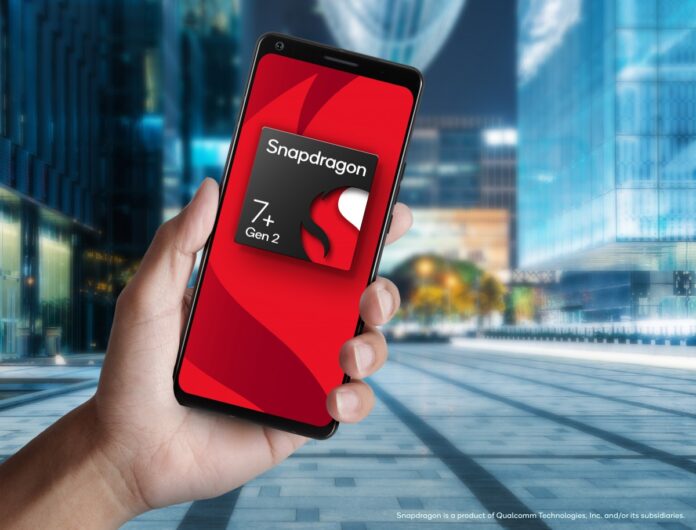First of all, the Snapdragon 7+ Gen 2‘s core design is identical to that of the Snapdragon 8+ Gen 1 SoC, with one Cortex-X2 performance core running at 2.91GHz, three Cortex-A710 bulk cores running at 2.49GHz, and four Cortex-A510 performance cores running at 1.8GHz.
The clock speed offered by Snapdragon 8+ Gen 1 is different, but the overall configuration is much closer than the latter.
Qualcomm Snapdragon 7+ Gen 2 All Specifications
The Snapdragon 7+ Gen 2’s core design is comparable to that of the Snapdragon 8+ Gen 1 SoC. It has four cores total, two Cortex-X2 performance cores clocked at 2.91GHz, three Cortex-A710 cores clocked at 2.49GHz, and two Cortex-X2 performance cores. The efficiency for the Cortex-A510 was 1.8GHz. The general configuration is much more similar to that of the Snapdragon 8+ Gen 1 even though the clock speeds are different.
Qualcomm claims a variety of developments in nearly every metric that can be measured as an impact. This includes a 50 percent (50%) gain over the Snapdragon 7 Gen 1 overall and a 15 percent increase in single-core performance on a competing chipset that Qualcomm has not named in a Geekbench benchmark.
According to Qualcomm, the Snapdragon 7+ Gen 2 SoC has a 2x more powerful GPU than the Snapdragon 7+, significantly improving Android devices’ graphics capabilities. This results in performance ratings that are 25% higher on graphics tests and 65% higher on Geekbench’s 1080p stress tests. Features like variable-modulated auto-shading, volumetric rendering, AI super-rendering, and Adreno Frame Motion Engine, among others, further improve the GPU’s powers.
Finally, a two times more powerful AI engine that offers 40% more AI performance per watt will also improve AI powers. The chip is built on TSMC’s 4nm process rather than Samsung’s, resulting in a package that is 13% more power efficient.
Snapdragon 7+ Gen 2 release schedule and pricing
The Snapdragon 7+ Gen 2 SoC will be found in phones that will be released this month, Qualcomm said during a press briefing. Two Chinese companies, Redmi by Xiaomi Group and Realme by BBK, have verified that they will soon use the chipset. Android Authority states that devices using this chip can cost between $400 and $600, or roughly Rs 30,000 to Rs 50,000.





